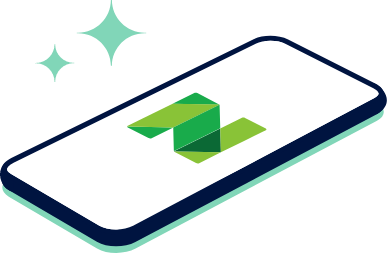How to Budget Money in 5 Steps
Divide your income among needs, wants, savings and debt repayment.
Many, or all, of the products featured on this page are from our advertising partners who compensate us when you take certain actions on our website or click to take an action on their website. However, this does not influence our evaluations. Our opinions are our own. Here is a list of our partners and here's how we make money.
A budget is a plan for how you use your money. No matter how much you earn or how often you get paid, a budget helps you stay on top of your bills, savings and other money goals. It can give you more control and less stress.
How to create a budget: step-by-step
To budget money, follow the five steps below.
Step 1. Figure out your after-tax income
If you get a regular paycheck, the amount you bring home is your after-tax income. This is also called your net income or take-home pay.
If money is taken out of your paycheck for things like a 401(k) or insurance, add that back in when making your budget. That way, you'll see your full income.
If you have other types of money coming in — such as from side gigs — subtract anything that reduces that income, such as taxes and business expenses.
» Stay informed: Check out our news hub for all the latest.
Step 2. Choose a budgeting system
A budgeting system is a plan for how to use your money. Everyone has different habits, personality types and approaches to managing money, and there are systems that can fit your lifestyle.
Every budget should cover your needs, some wants and savings for emergencies and the future.
Examples of budgeting systems include the envelope system, the zero-based budget, and the 50/30/20 budget, in which 50% of your take-home pay goes toward necessities, 30% toward wants and 20% toward savings and retirement.
Other breakdowns, like 60/20/20 and 60/30/10, may work well for some situations.
Stress less. Track more.
See the full picture: savings, debt, investments and more. Smarter money moves start in our app.
Step 3. Track your progress
Write down what you spend, or use a budget app or NerdWallet's budget template to help.
Pay attention to where your money is going. If you notice areas where you’re overspending, try to cut those costs. If you’re able to make cuts and have money left over, put it toward debt repayment, savings or another financial priority.
Step 4. Automate your savings
Set up automatic savings to make things easier. You can set automatic deposits to an emergency fund, investment or retirement account on your paydays.
If your income changes from month to month, set reminders to move money when you can. You don't have to do it alone — a friend or online group can keep you motivated to stick to your budget.
Step 5. Practice budget management
Your money situation will change over time. Check your budget every few months and adjust if needed.
If you find that the initial budgeting system you chose isn’t working for you, consider trying a different strategy. The budget you choose doesn’t have to last forever.
Determine your budgeting priorities
When budgeting, it can be hard to figure out which items are most urgent. Should you prioritize your credit card debt, student loan repayments or retirement savings? Here is a list of potential priorities from most to least urgent.
Priority No. 1: Start an emergency fund.
Many experts recommend trying to build up several months of bare-bones living expenses. NerdWallet suggests starting an emergency fund of at least $500, which could be enough to cover small emergencies and repairs. If that starting amount isn’t possible, put at least a little bit toward the fund every paycheck.
According to a recent NerdWallet survey, 46% of Americans plan on saving money for emergencies in 2026.
Priority No. 2: Get your 401(k) match.
If your job offers a 401(k) match, consider putting in enough to get the full match. That's free money.
Priority No. 3: Pay off high-interest debt.
A NerdWallet study found that 30% of Americans plan on paying off one or more of their debts in full in 2026 .
If this is one of your goals, focus on high-interest credit card debt or loans, such as personal and payday loans, title loans and rent-to-own payments.
Look into ways to help with your debt — like a debt management plan or bankruptcy — if either of these things is true for you:
- You can't repay your credit cards, medical bills or personal loans (i.e., unsecured debt) in the next five years, even if you cut your spending a lot.
- Your total debt (not including things like a mortgage or car loan) is as much or more than half of what you make before taxes.
Priority No. 4: Save for retirement (again).
Once you've paid off your high-interest debt and have some extra money, focus on saving for retirement. Financial experts suggest saving 10-15% of your income before taxes for retirement. For many people, that's a goal to work towards over time. Just know that your company match, if offered, counts toward that 15% total.
If your job doesn't offer a 401(k), or if you’ve already put in enough to get the full match, you can look into other options, such as a Roth or traditional IRA.
Priority No. 5: Grow your emergency fund.
Keep adding to your emergency savings. Try to build up enough to cover three to six months of basic living expenses — like rent, groceries and utilities.
It might take a long time to reach this goal. That's OK. Use the fund when emergencies happen, and try to put the money back when you can.
Priority No. 6: Pay down the rest of your debt.
Once your emergency fund is in good shape and your retirement savings are on track, focus on other debts. These payments go beyond the minimum required to pay off debt, if you have any remaining.
If you’ve already paid off your high-interest debt, what’s left is probably lower-rate, such as student loans, or tax-deductible debt like your mortgage. Tackle these when the goals listed above are covered.
Try not to take money away from your emergency fund and retirement savings to do this.
Priority No. 7: Save for yourself.
Great job! If you've taken all the steps above, you're in a great position. You’ve built smart money habits and now have more freedom with your money.
To earn more on your savings, think about using a high-yield savings account. These often pay more than regular savings accounts.
You can divide your savings into different buckets — one for emergencies, one for car repairs and one for fun. Some banks will automatically move your monthly interest earnings to your bucket of choice, helping you reach your goals faster. The more you save, the more your money grows. It's a win-win.
Try a simple budgeting plan: 50/30/20
One popular budget plan is the 50/30/20 budget. If you stick to this plan, you can handle your bills, save for the future, prepare for emergencies and enjoy life, too.
Allow up to 50% of your income for needs
Your necessities — about 50% of your after-tax income — should include:
- Groceries.
- Housing.
- Basic utilities.
- Transportation.
- Insurance.
- Minimum loan and credit card payments. Anything beyond the minimum goes into the savings and debt repayment category.
- Child care or other expenses you need so you can work.
If your basic needs go over 50%, you can use some of your “wants” money for now. That's OK. But if those needs are going over 50% month after month, consider switching to another budgeting model. Switching your budget isn't a sign of failure. Budgets should work for your life.
If your necessities fall under the 50% cap, review the expenses that stay the same every month, often called fixed expenses. You may find a better cell phone plan, an opportunity to refinance your mortgage or a less expensive car insurance option. Those money moves create breathing room in your budget.
Leave 30% for wants
Separating wants from needs can be difficult. Needs are essential for you to live and work. Typical wants include dinners out, gifts, travel and entertainment.
It’s not always easy to decide: Are organic groceries a want or a need? How about house cleaning services or food delivery? Decisions vary from person to person.
If you want to get out of debt as fast as you can, you may decide your wants can wait until you have some savings or your debts are under control. But your budget should include fun money. If it's too strict, it's harder to stick with.
Commit 20% to savings and debt paydown
Use 20% of your after-tax income to put money away for the unexpected, save for the future and pay off debt balances (paying more than minimums). Think about your biggest money goals and use this part of your income to reach them.
Best way to budget
The best way to budget is one you can follow. Pick a plan that works for your life and goals. If the 50/30/20 budget isn’t realistic for you, maybe a 60/20/20 breakdown makes more sense — 60% toward necessities, 20% toward wants and 20% toward savings and retirement.
You might have to try a few different budget plans to find one that works for you. Just make sure any plan covers needs, wants and savings.
Try out a few tools to track your money — like a notebook, a worksheet or an app — and pick the one you'll actually use.
By testing what works best for you, you're more likely to find a budget that helps you reach your financial goals.

Article sources
NerdWallet writers are subject matter authorities who use primary,
trustworthy sources to inform their work, including peer-reviewed
studies, government websites, academic research and interviews with
industry experts. All content is fact-checked for accuracy, timeliness
and relevance. You can learn more about NerdWallet's high
standards for journalism by reading our
editorial guidelines.
- 1. NerdWallet. 2026 Consumer Outlook Report – 51% Say Prices Will Worsen. Accessed Jan 1, 2026.
On this page
Related articles






